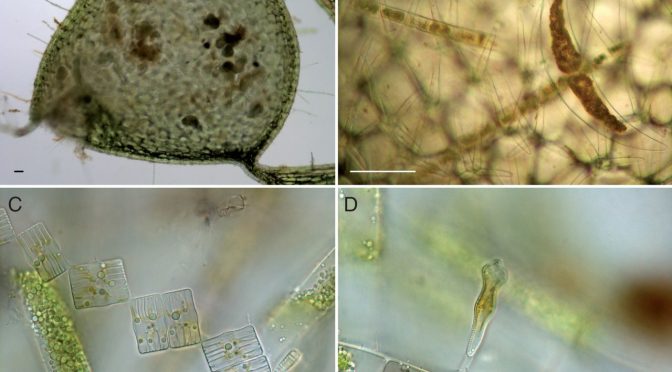Category: Amazing Plants
-
How The Kapok Tree Meets Its Water Transport Challenge
Given its towering height, how does the Kapok get water 150 feet or more off the ground?
-
Plants Protect Themselves With Fake Spider Webs
If a plant can’t attract a spider bodyguard, the next best thing might be to fake it. By mimicking the signs that a spider is nearby, a web being an obvious signal, the plants could scare off insect pests without having to invest in rewards or attractants for actual spiders.
-
Mycorrhizal Fungi & Plants: Every Relationship Is Different
In the study, the research team worked with arbuscular mycorrhizal fungi. These are known to colonize the roots of land plants. The plants benefit from this, because the fungus provides them with nutrients and minerals. However, are the impacts of this marriage of convenience with the fungus on plant chemistry equal for all plants? That is what the researchers wanted to find out.
-
Have Flower Colors Evolved To Protect Pollen?
That protecting pollen from UV damage is a cause of floral colour variation is an important conclusion, although it does not rule out other factors from being as (or more) significant, including the effects of UV on other plant functions. Nevertheless, it is somewhat ironic that, after 180 years of research on Gloger’s rule by zoologists, some of the strongest evidence for the driver of that latitudinal pattern comes from research on plants
-
Ferns Playing With Catapults
If you are a stationary being such as a plant or a fungus, it’s in your best interest to devise a method of evicting your offspring in the most expedient and efficient way possible. For ferns with leptosporangia, that means launching them in the manner of a boulder addressed to the nearest crusader castle.
-
The Botanist Who Hunts For Giant Trees
“There are dozens of large tree species waiting to be discovered in this area,” he said. “There’s very little known of them. The local people don’t even have names for them. If you scan them for chemicals you might find something of great value to society, either now or in the future. You never know with these unknown trees.”
-

“Carnivorous” Plant Also Likes Salads
Carnivorous plants catch and digest tiny animals in order and derive benefits for their nutrition. Interestingly the trend towards vegetarianism seems to overcome carnivorous plants as well. The aquatic carnivorous bladderwort, which can be found in many lakes and ponds worldwide, does not only gain profit from eating little animals but also by consuming algae and pollen grains. This results in survival in aquatic habitats where prey animals are rare, and in increased fitness if the animals and algae are caught in a well-balanced diet.
-
Plants Re-Set Their Seeds’ Germination Based On Climate Experience
If the mother experiences warmer temperatures, it produces more of a protein called Flowering Locus T (FT) which represses production of tannins in the fruit, making seed coats thinner and more permeable. This means they germinate more quickly.
-
Chemistry Fun With Poinsettia
A number of different indicators are available to test for the pH of a solution (a number of which were summarised in a previous graphic), but you can also make a pH indicator from the leaves of the poinsettia plant. Whilst we’re discussing them, poinsettias also have a reputation for being poisonous – a claim that is in fact entirely unfounded.
-
Plant Caught Trapping Bugs… 47million Years Ago!
What’s interesting about Roridula plants is that unlike pitcher plants or Venus flytraps, they don’t make their own digestive enzymes. They trap insects, but then depend on one of two species of “Roridula bugs” to eat their captured prey. Roridula bugs are insects that produce a greasy substance that lets them live on Roridula plants without getting trapped. The plant then absorbs nutrients excreted in the Roridula bugs’ feces.
